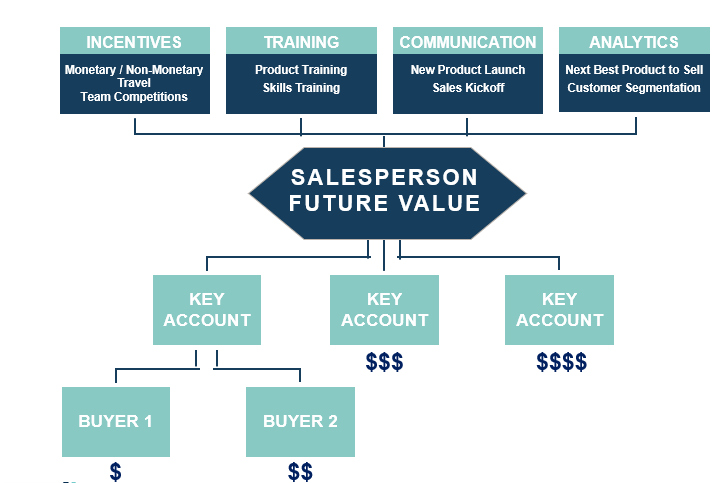A recent IRF study highlighted the trend of employers and your reward and recognition program managers using big data, predictive analytics, and machine learning techniques to continuously monitor and analyze your talent. At One10, we applaud the intent of this study and the proposed application of analytics to improve the performance of your largest asset – your employees. In this post, we will take this idea one step further as we apply these techniques to an important audience for many of you – your channel partner’s employees.
Channel partners can be retailers, dealers, distributors, or even value-added resellers and systems integrators in the high-tech industry. Channel partners are generally one step closer to the end customer or ultimate consumer and are an effective way for larger companies to reach new markets or smaller customers. Oftentimes, they provide the “final mile” between large manufacturers and their customers. For example, most auto manufacturers sell through a network of dealerships and many high-tech companies use a variety of channel partners to service smaller customers.
Within a firm’s channel partners, the main link to the end customer is typically a dealer sales representative (and sometimes their sales manager). In a contractual setting, like a car dealership, where only one brand is sold by the sales rep, incentive programs are used to drive incremental volume. In a non-contractual setting, where multiple brands can be sold (including a house brand), incentive programs are designed to encourage the dealer sales representatives to promote the client’s brand at the expense of other brand’s products or services.
How can one use analytics to enhance the performance of these dealer sales reps? What happens when a sales rep missed their targets for the year? The reply of most managers is something like, “You must need training!” The sales rep doesn’t need the training next week as much as they needed it last year to achieve their sales goals! The Salesperson Future Value framework helps solve this problem and optimize sales in the future.
In the October 2014 issue of the Journal of Marketing Research, V. Kumar, Sarang Sunder, and Robert P. Leone suggest that the right way to measure the effectiveness of a dealer sales representative (or any sales rep for that matter) is to evaluate their future value. The idea is to summarize the future value portion of a customer’s lifetime value to the sales representative that is responsible for delivering it to their firm and then providing incentives, training, and other support just in time to ensure the customer revenue is delivered.
How does this work in practice? One10 helps clients by optimizing the sales enablement toolkit for each channel sales rep by delivering the right tool at the right time and ensuring that the future customer value is captured and exceeded.
Adapted from:” Measuring and Managing a Salesperson’s Future Value to the Firm” Authors: V. Kumar, Sarang Sundar, and Robert P. Leone. Published in: The Journal of Marketing Research, Vol. LI (October 2014), 591-608
First, we leverage our analytics expertise to identify the channel sales reps who are most motivated by training and those who are most motivated by incentives. One size does not fit all, but our PerformX platform handles both types of channel sales reps with ease.
Next, we develop customer lifetime value models at the right level of actionability. Some accounts may have multiple buyers where each buyer behaves differently, and the sales rep’s needs will change accordingly. Additionally, the future value forecast time frame needs to be mapped to the appropriate planning time frame. Many companies use an annual budget process that supports a rolling three-year plan, so the time frame of the value forecast should support both short- and longer-term windows.
A direct result of the customer lifetime value modeling is a set of analytical tools that can be used to support the salesperson. These may include machine learning algorithms that identify the “next best” product to sell to a customer given the customer’s purchase history and could include a customer segmentation model that combines the customer’s future value with their specific needs to create a portfolio of customer treatments that are designed to optimize value.
Given all the insights identified in the process thus far, we design the incentive program, the training curriculum, and the communications plan to drive performance. While this sounds like a lot to manage, once again, our PerformX platform comes to the rescue and makes it easy for clients to manage the complexity and provides the necessary feedback to ensure that things are on track.
If you are interested in learning more on this topic and how it might apply to your business, you are in luck! Sign up for our webinar on March 12th to hear more.


